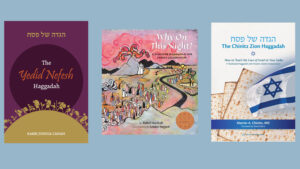For many of us, 2020 was one of the more stressful years in recent memory. Between social distancing, imminent threats to our health and well-being, overall fear of the unknown, and the political and social unrest around us, 2020 had its share of anxiety-inducing experiences.
One way I’ve attempted to stay sane through it all has been through engaging in Jewish meditation. To many, this may come as a surprise but Jewish texts put forward many forms of meditation techniques.
I’d like to share a few that have worked for me over these months.
The first form is mantra meditation. This entails repeating the same word over and again to oneself for an extended period of time. The purpose of this is two-fold. In this practice, whenever one finds one’s mind wandering, one quickly returns to the mantra. This helps neutralize extraneous thoughts, fears and worries, firmly grounding us in the present. When done correctly, this “clearing out” makes space for other, more spiritual, sides of ourselves to rise to the surface.
Another purpose is to center us on the meaning of the words themselves. This is where the “Jewish” element comes in. Rebbe Nachman of Breslov suggests using the phrase Ribbono Shel Olam, which means master of the universe. I have used this many times over these months and found it to be effective.
Others I have meditated upon are Avraham, Hallelujah (praise G-d), and Ve’al Roshi Shechinat El (and upon my head rests G-d’s presence — from a Jewish bedtime prayer). You can be creative with this and find a phrase that personally speaks to you.
It’s best to turn this into a daily routine. You can begin with five minutes a day. I tried this for five minutes daily over a full month and saw wonderful results. And I was pleased to find that the serenity spilled over into the rest of my day! You can build yourself up slowly as well, tacking on more and more minutes as you go along.
The letters of the Hebrew alphabet are extremely important when it comes to Jewish meditation. According to Jewish mysticism, it was with these letters that G-d created the world. It is no wonder then that the letters are believed to contain transformative qualities.
One such transformation is effected through letter contemplation, our second meditative practice.
This discipline fills volumes of books. But to get you started, I suggest choosing a letter from the Hebrew alphabet, such as the letter alef א, heh ה, or yud י. Close your eyes and envision this letter above your head. Imagine divine light illuminating the letter until it is filled with light. Envision that light flowing down through the letter and filling up your body, limb by limb, from the top of your head down to your toes. Try maintaining this mental image of the letter as long as you can, as you slowly repeat this visualization technique.
This exercise may sound foreign to some but when done properly, it can be very soothing, and as with the mantra meditation, continuous meditation on the letters creates a diversion from unwelcome thoughts — and that’s what we are looking for! As one progresses, one can add on letters. The most sacred meditation is the holy four-letter name of G-d (yud-heh-vav-heh).
The final form of meditation is hitbodedut (solitude prayer). This is basically a daily ritual of spontaneous prayer. I know that sounds funny, but it is about setting aside time every day to openly share with G-d whatever is on your mind.
This can feel daunting at first, but thankfully Rebbe Nachman provides us with direction. He recommends finding a secluded place and beginning with even one word. Once you are comfortable with this, proceed to verbally express whatever you are feeling. This spontaneous prayer ritual can be very meditative. Aside from the release achieved by means of expressing our feelings and pent-up frustrations, there is a certain union formed through consistent hitbodedut that is hard to describe. When done daily for a significant amount of time (Rebbe Nachman recommends an hour, but one can do this for five minutes as well), one finds oneself in a conversation with the divine throughout their day.
The most important thing when it comes to all of this is to stick with it. You may not see results on the first day or week, but don’t give up! And remember: a little bit a day is better than nothing! You can also incorporate breathing techniques and relaxation music into these meditation practices to enhance your experience.
May this upcoming year be filled with good physical, emotional and spiritual health for all of us.

Rabbi Dr. Eli Yoggev serves Pikesville’s Beth Tfiloh Congregation.





